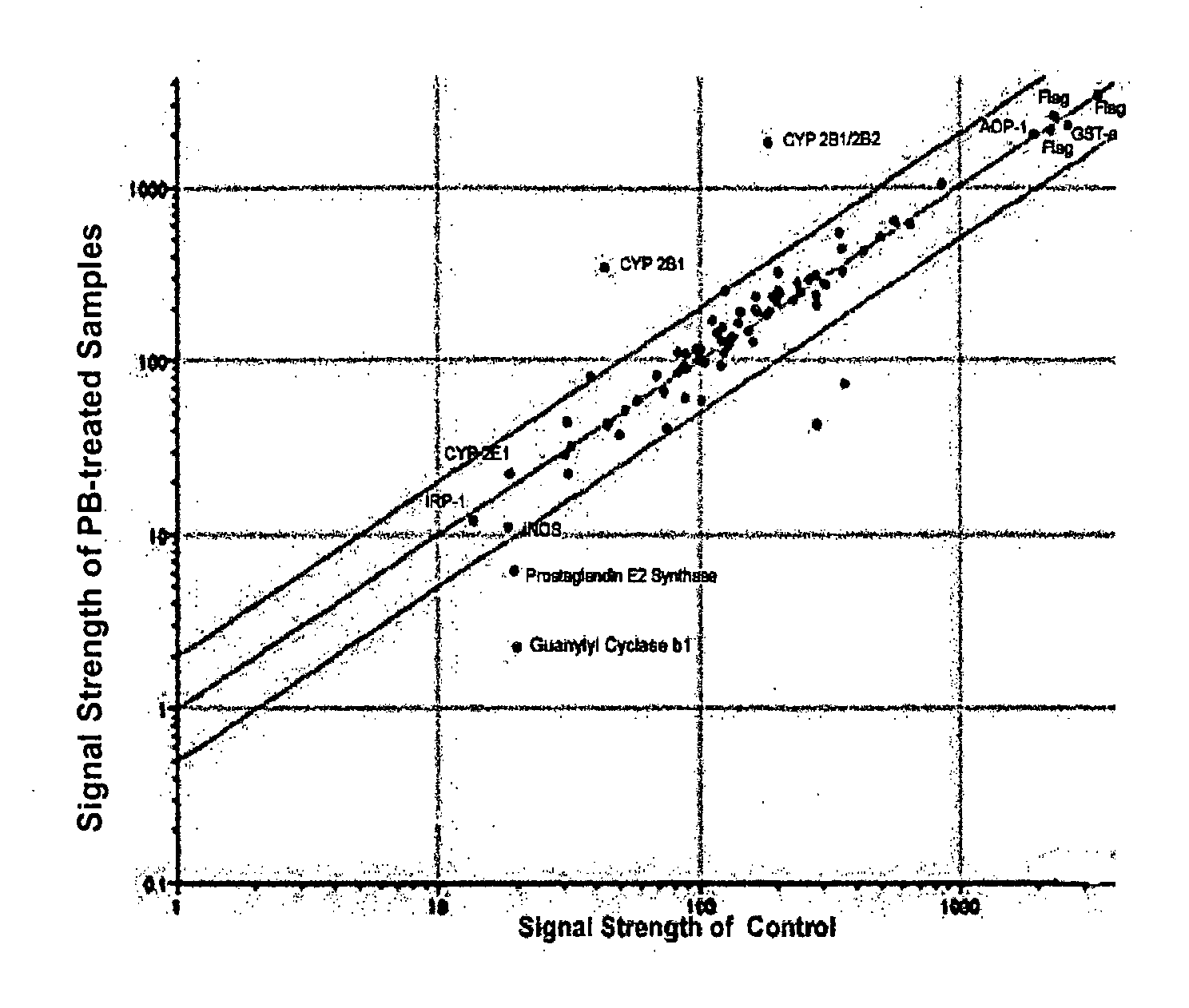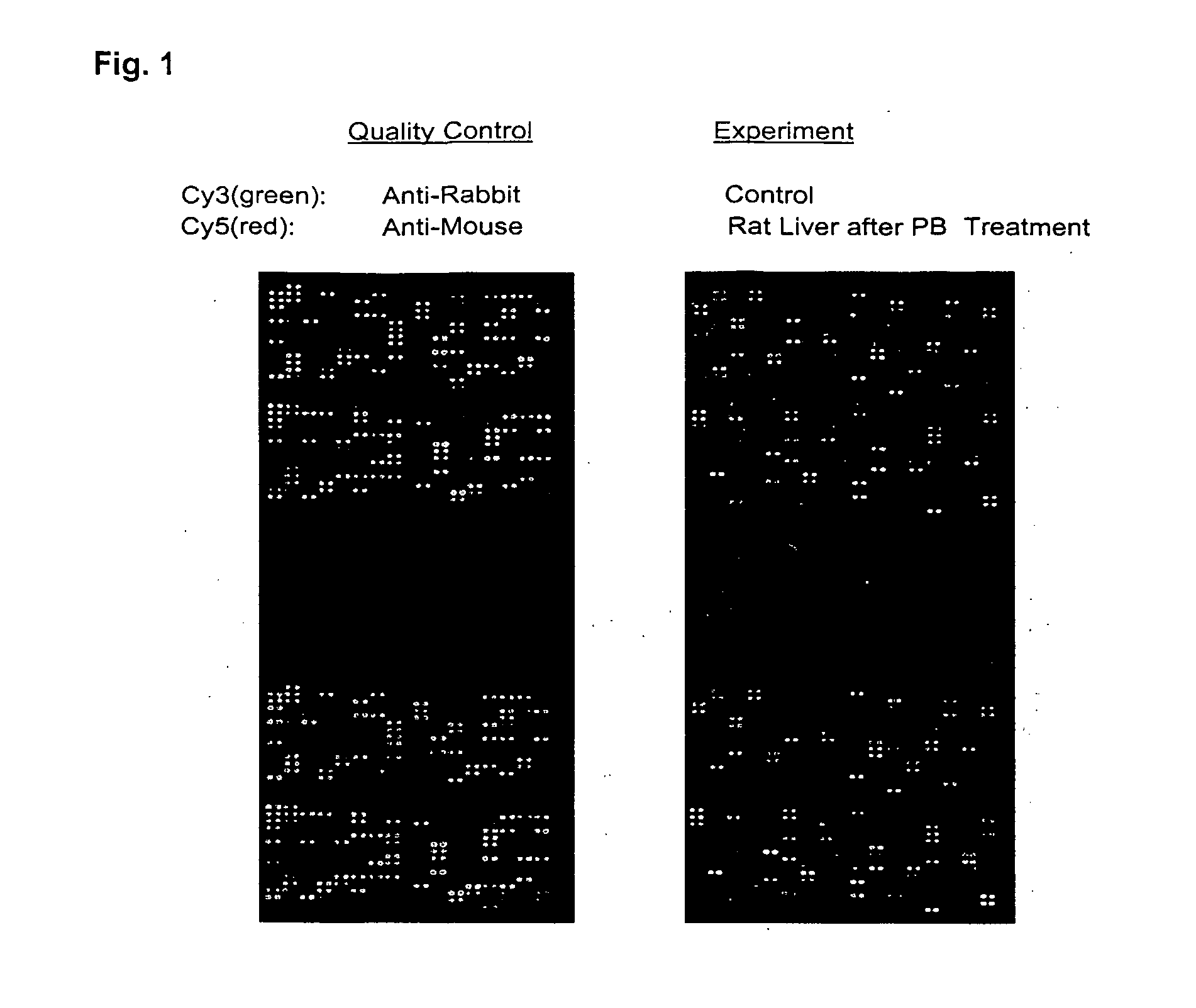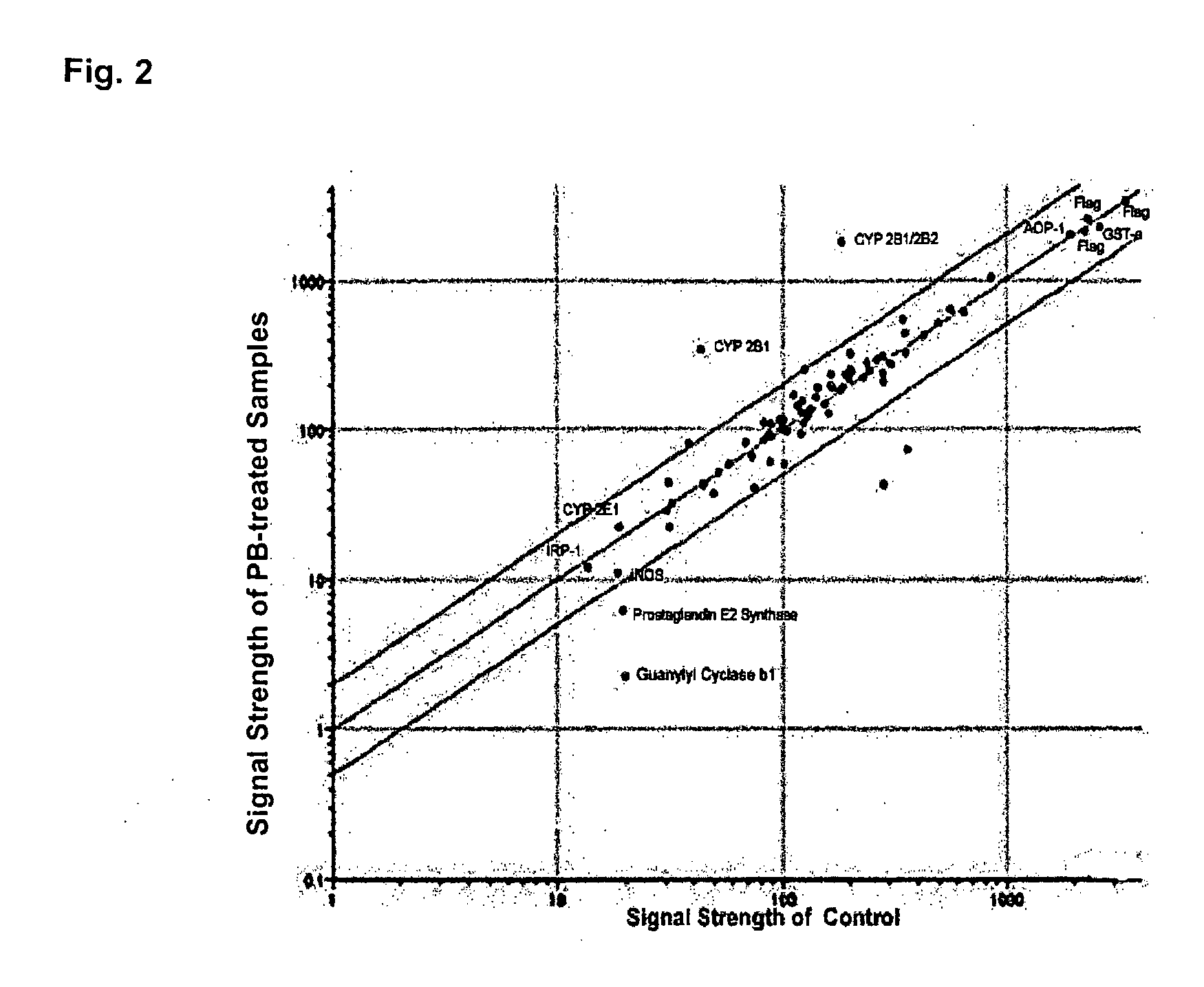Chip Production, Hybridization and Data Interpretation for Antibody and Protein Microarrays
- Summary
- Abstract
- Description
- Claims
- Application Information
AI Technical Summary
Benefits of technology
Problems solved by technology
Method used
Image
Examples
example 1
Rat Drug-Metabolizing Enzyme Microarray Slide Production
[0081]Approximately eighty antibodies for drug-metabolizing enzymes and proteins functionally related to the drug-metabolizing enzymes were selected for rat antibody microarray slide production (See, Table 1). UDP-glucunonosyl transferase antibody was produced by immunization of a rabbit with a synthetic human peptide. Cross-reactivity with rat UDP glucuronosyl transferase is not known. Western blot analysis with hepatic proteins obtained from untreated rats and rats treated with phenobarbital under non-denaturing conditions revealed that the antibody produced for the human protein recognized the rat form.
[0082]The antibody solutions with increasing concentration of 0 (PBS), 0.5, 5, 50 and 500 μg / ml were spotted (spotting volume, 1 nl) on both polyacrylamide (hydrogel)- and nitrocellulose (FAST)-based antibody chips at the Michigan Life Sciences Corridor (MLSC) Proteomics facility at Van Andel Institute using split pin technolo...
example 2
Comparison of Spotting Efficiency of Antibodies on Polyacrylamide (Hydrogel)-Based Chips with that of Nitrocellulose (Fast)-Based Chips
[0085]Both polyacrylamide (hydrogel)- and nitrocellulose (FAST)-based chips were produced with 0.5, 5, 50 and 500 μg / ml IgG concentration (1 nl per spot in duplicate on both top and bottom of the slide) and 0.5 and 1 mg / ml IgG concentrations (1 nl per spot in triplicate on both top and bottom of the slide) at the MLSC Proteomics facility at Van Andel Institute.
[0086]The chip was blocked for 45 minutes at room temperature with TTBS solution. A quality control analysis was carried out by hybridizing the chip with 25 μg Cy3-conjugated anti-rabbit IgG mixed with 50 μg Cy5-conjugated anti-mouse IgG (total volume, 1 ml) for one hour at room temperature. Washing was carried out with TTBS for four times. The chip was dried and imaging was carried out using GenePix4000A. Hybridization of the hydrogel chips with anti-mouse and anti-rabbit IgG showed fluorescen...
example 3
Quality Control of Antibody Microarray Slides and Selection of Optimal Antibody Concentration for Spotting
[0087]A hydrogel antibody chips with 05, 5, 50 and 500 μg / ml antibody concentrations (1 nl per spot) were produced at the MLSC Proteomics facility at Van Andel Institute. The chip was blocked for 45 minutes at room temperature with TTBS solution. A quality control analysis was carried out by hybridizing the chip with 25 μg Cy3-conjugated anti-rabbit IgG mixed with 50 μg Cy5-conjugated anti-mouse IgG (total volume, 1 ml) for one hour at room temperature. Washing was carried out with TTBS for four times. The chip was dried and imaging was carried out using GenePix 4000A.
[0088]As shown in FIG. 1, “Quality Control,” majority of visible antibody spots was round and with even density. No background dye binding was detected. However, in both Cy3 and Cy5 spots, majority of 0.5 and 5 μg / ml antibody spots showed poor or no fluorescent signals whereas 50 and 500 μg / ml showed strong signals...
PUM
 Login to View More
Login to View More Abstract
Description
Claims
Application Information
 Login to View More
Login to View More - R&D
- Intellectual Property
- Life Sciences
- Materials
- Tech Scout
- Unparalleled Data Quality
- Higher Quality Content
- 60% Fewer Hallucinations
Browse by: Latest US Patents, China's latest patents, Technical Efficacy Thesaurus, Application Domain, Technology Topic, Popular Technical Reports.
© 2025 PatSnap. All rights reserved.Legal|Privacy policy|Modern Slavery Act Transparency Statement|Sitemap|About US| Contact US: help@patsnap.com



